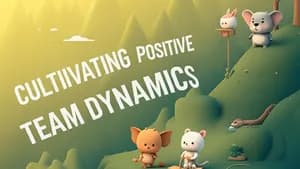Imagine a vibrant mosaic, where each piece, unique in shape, color, and texture, contributes to a stunning overall picture. This is much like a team composed of individuals from different generations. In today's interconnected world, whether it's a school project, a volunteer committee, or even family discussions around the dinner table, you'll often find people of varying ages working together. While this diversity is an incredible asset, it also presents unique challenges and wonderful opportunities. As you navigate your learning journey and collaborative experiences, understanding how to effectively work across generational lines isn't just a useful skill; it's an essential one that will serve you well for a lifetime.
Learning to bridge these generational gaps means fostering mutual understanding, respect, and truly effective collaboration. It’s about recognizing that someone's age often shapes their experiences, perspectives, and even their preferred ways of communicating and learning. This isn't about stereotypes, but about appreciating the rich tapestry of viewpoints that different life stages can bring. Embracing this diversity can transform potential friction into dynamic synergy, making your teams stronger, your projects more innovative, and your personal relationships richer. Let’s explore how you can become a master at building these powerful, multi-generational teams.
Understanding Diverse Perspectives and Experiences
One of the first steps to strengthening any team dynamic is to truly understand the people within it. When we talk about generational differences, we're not just talking about age in years; we're talking about the distinct historical, technological, and cultural environments that have shaped individuals. For instance, someone who grew up without the internet might approach research or problem-solving very differently from someone who has always had instant access to information. Think about your parents or grandparents discussing a problem, compared to how you or your friends might tackle it. These are not right or wrong ways; they are simply different experiences.
Consider a school debate team. A senior student, perhaps from a generation that valued traditional research methods like library books and physical archives, might meticulously gather information, relying on deep dives into established texts. A younger student, a digital native, might intuitively use search engines, online academic databases, and collaborative cloud documents to gather and share information rapidly. Neither approach is superior; a truly strong team would find a way to integrate both. The senior's methodical approach provides depth and accuracy, while the younger student's digital fluency offers speed and breadth of information.
By taking the time to observe and genuinely listen, you can begin to appreciate the 'why' behind different approaches. Instead of immediately judging a slower method as inefficient or a faster method as superficial, try to understand the underlying reasoning or comfort level. Often, what appears to be a 'generational difference' is simply a difference in preferred tools, communication styles, or even work-life balance priorities shaped by their formative years. This empathy is the cornerstone upon which all other effective team strategies are built. It’s about moving beyond assumptions and embracing curiosity, asking

